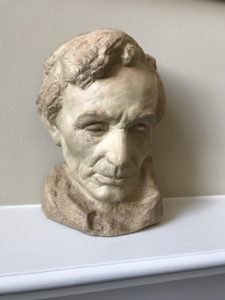 Abraham Lincoln was the first Republican President of the United States. As the southern slaveholding states seceded from the Union, Lincoln was faced with an existential crisis that would define, or destroy, the last best hope on earth. Today, both the Republican and Democratic parties claim the mantle of Lincoln. So who has the better case?
Abraham Lincoln was the first Republican President of the United States. As the southern slaveholding states seceded from the Union, Lincoln was faced with an existential crisis that would define, or destroy, the last best hope on earth. Today, both the Republican and Democratic parties claim the mantle of Lincoln. So who has the better case?
Lincoln’s Republican Party was cobbled together from several pre-existing parties. Lincoln himself was “always a Whig in politics,” and the Whig party was the central backbone of the new Republican party. In the 1850s the Whig party splintered and the Republican party came into being. Lincoln helped define the new party, especially in Illinois, by encouraging them to focus primarily on a platform restricting the expansion of slavery into the federal territories. Joining most Whigs were anti-slavery factions of the Democratic party, as well as similar-minded members of the Free Soil, Know Nothing, Liberty, and other minor parties. The Whigs had gotten their start as an opposition party to challenge the Jacksonian Democrats.
The new Republican party carried on the Whigs support for internal improvements. With Lincoln as its premier champion in Illinois, internal improvements were government funded infrastructure such as roads, canals, navigable rivers, and railroads. These improvements would enable economic expansion and a chance for all men to better their condition. Whigs, and Lincoln, believed that education was of critical importance to the growing population of the United States. As one scholar put it, whiggery was the triumph of the cosmopolitan and the national over traditional folkways and customs. The Whig and Republican parties believed in giving all men a fair chance at advancement. They were a party of diversity of views, including those driven by moral reform, anti-slavery abolitionists, and those opposed to Andrew Jackson’s harsh and racist treatment of Native Americans in his rush to expand the nation’s border. Whigs also favored passing relief legislation (aka, stimulus packages) in response to the financial panics of 1837 and 1839. In short, Whigs were for a strong central government that supported education and federal investment in people’s lives such that all had an equal opportunity to make their lives better. Today they would be called a progressive party.
The Republican party ran its first presidential candidate in 1856. John C. Fremont lost that election, but was close enough that he could have won if a few more states’ electoral votes had gone his way. This scared the slaveholding class of the South who had controlled the federal government since its inception. Seeing a trend that would reduce their federal power, slaveholding states immediately stepped up their activities to protect and expand slavery, and by extension, their power. The Dred Scott Decision of the pro-slavery conservative Supreme Court in 1857 helped their case, but Stephen A. Douglas, the most prominent Democrat in the nation and the likely nominee for the 1860 election, while he himself was racist and didn’t care if slavery spread into the territories, let Southerners know that under his Popular Sovereignty mechanism of the Kansas-Nebraska Act most states would probably choose to be free, not slave, states. The Lincoln-Douglas Senate debates of 1858 reinforced southern slaveowner belief that Douglas was not going to protect slavery expansion. This split the Democratic vote (Southern Democrats and Northern Democrats ran different presidential tickets), a decision which ensured their loss in the 1860 election. When a Republican won, the southern slaveholding states chose to destroy the Union rather than take a chance of losing their system of slavery. In its essence, the Civil War was about rich plantation owners protecting their profitable business model; profitable because it required the forced enslavement of Americans based on the color of their skin.
In addition to the progressive economic views of the Whig party, the new and diverse Republican party added to their platform the restriction of expansion of slavery into the federal territories, which by this point included not only the remaining Louisiana Purchase lands but also the rest of the land to the west coast acquired at the end of the war with Mexico in 1848. Republicans did not seek to ban slavery in the states where it existed, merely to restrict its expansion in the belief that slavery would eventually die under the weight of its own immorality and bad economic policy. Lincoln reiterated many times that he believed (as did most Americans) that, in its tacit acknowledgement of slavery while avoiding the actual words, the Constitution allowed slavery to continue in those states where it existed. Still, slaveholding states felt that to protect slavery they must break apart the Union. Most Northern Democrats were pro-slavery but also pro-Union, as were at least some Southern Democrats who but for circumstances would have been against secession.
So we have Lincoln’s Republican party as the progressive party favoring a federal government that actively supports its citizens, advocates for government support of infrastructure projects that benefit the masses, and federal intervention in times of crisis to protect the ability of the people to better their condition. Lincoln’s party sought to remove unfair labor practices, provide for equality for all, and “do for a community of people, whatever they need to have done, but cannot do, at all, or cannot, so well do, for themselves.” Undoubtedly Lincoln’s party would support equal rights, the end to discrimination, federal support for high-speed rail and other internal improvement projects, and stimulus bills during extreme financial crises that threaten the individual and national economy. Lincoln never forgot his impoverished upbringing and always sought to bring the benefits of science, technology, and economic development to the masses, not just to the super-rich. Lincoln’s Republican party was progressive and Hamiltonian in its economic philosophy.
The Democratic party of Lincoln’s time was conservative. They favored status quo policies that protected the rights and profits of the wealthy, including the idea that whites were superior to non-whites and thus could enslave other people. The Jacksonian Democratic party of the time was significantly more racist and exclusionary; it was also more Jeffersonian in its economic philosophy, that is, more rural and agronomic on a large scale.
Today, of course, these primary characteristics are reversed. The Republican party held control through the end of Reconstruction, ending around 1877 when the former slaveholding states of the South were able to advantage their increased congressional power (they now could count 5/5ths of all African Americans rather than the 3/5ths of enslaved people) and began engaging in legal and extra-legal practices to eliminate African American voting rights. Conservative Democrats held control throughout the first half of the 20th Century, largely by implementing Jim Crow laws to segregate the populace, intimidation to restrict voting and other human rights (via the KKK and other racist organizations), and otherwise promote white supremacy in America. But by the 1950s a shift was beginning. Strom Thurmond, an openly racist Democrat from South Carolina, had run for president in 1948 under a new party mantra called the Dixiecrats (he later switched to Republican). After Brown v. Board of Education required the desegregation of schools, racist Democrats in the South began a massive shift. Democratic President John F. Kennedy began supporting civil rights for African Americans, and his successor, Democrat Lyndon B. Johnson, signed into law the 1964 Civil Rights and 1965 Voting Rights Acts. This led the Dixiecrat contingent of the Democratic party to lead the exodus of racist Democrats to the modern Republican party. Johnson’s successor, Republican Richard M. Nixon, intentionally engaged in what he called “the Southern Strategy” to recreate the Republican party as the party of the Confederacy with a stronghold in the deep South and focused on building a white supremacy-based electorate in which fear of non-whites became the central theme. This spawned today’s version of Jim Crow laws to restrict non-white citizenship and pressing a dystopian view of black violence against whites inherent in today’s screams of “law and order” and “Suburban Housewives of America.”
This reversal of parties also extends to economic philosophy. The slaveholding economy benefited the few richest Southerners who managed to absorb smaller farms into huge plantations. Plantation owners were immensely wealthy compared to the masses; they were the 1% of the time. Small family farms largely ceased to exist in much of the South. The wealthy plantation owners controlled not only the economy but the politics, often serving directly as political leaders or indirectly by funding – and controlling – surrogates whose function was to protect the wealth of the plantation owners, not the masses. In contrast, the North was dominated by smaller businesses ranging from family farms to cottage industry to the occasional factory employing neighbors. Northern Whigs and Republicans favored homesteading, i.e., allowing small families to move westward into the territories to start farms on federally owned parcels of land, which would become theirs after five years of production. Southerners were against any westward expansion or other free-labor arrangements because they saw it as “too much power to the federal government” (aka, cutting into their system of slave labor). Southern Democrats believed in “small government,” except of course when they controlled it. Today this reflects more the Republican party, which avers its belief in small government except when it benefits the richest Americans.
The issue is more complicated than this, of course, but in general the two parties have switched places. Lincoln’s more progressive Republican party is more akin to today’s Democratic party. Lincoln himself could be characterized as a prudent progressive. The conservative Democratic party of Lincoln’s time, and up to about the 1960s, is more akin to today’s Republican party. This isn’t a partisan position (I don’t belong to either party); it’s simply an acknowledgement of history.
To make the point more obviously, take a look at a map of the United States at the beginning of the Civil War using today’s “red state/blue state” graphics. The Confederacy was all “blue” state back then; today the same states are “red.” The Union was all “red,” today they are “blue.” The states have reversed. This isn’t because conservatives from the South all moved North. People who identify as conservative and liberal remained where they always were, they merely changed political identification (see Strom Thurmond et al. above).
Today’s Republicans proudly announce they are the “party of Lincoln.” And yet, they are the ones who cry “You’re trying to erase my heritage” to anyone suggesting that flying a Confederate battle flag is inappropriate, or who suggests taking down Confederate statues and monuments. You can’t be both the party of Lincoln and the Confederacy any more than you can wave a Nazi symbol and be pro-American.
All of this is hard to grasp in a nation where the teaching of history often promotes different realities depending on where you grow up. All presidents, and perhaps all American politicians, today seem to have a need to avow fealty to Abraham Lincoln. Lincoln saved the Union from destruction and took large steps in ending slavery, so it’s no surprise that another tall transplanted Illinoisan would find common ground with our 16th president. Other presidents also crave the mantle of Lincoln but clearly don’t live up to the ideal. Still, we can all learn from Lincoln. As long as we first understand what Lincoln means.
 Lincoln: The Fire of Genius: How Abraham Lincoln’s Commitment to Science and Technology Helped Modernize America was released on September 1, 2022.
Lincoln: The Fire of Genius: How Abraham Lincoln’s Commitment to Science and Technology Helped Modernize America was released on September 1, 2022.
The book is available for purchase at all bookseller outlets. Limited signed copies are available via this website. The book also listed on Goodreads, the database where I keep track of my reading. Click on the “Want to Read” button to put it on your reading list.
You also follow my author page on Facebook.
David J. Kent is President of the Lincoln Group of DC and the author of Lincoln: The Fire of Genius: How Abraham Lincoln’s Commitment to Science and Technology Helped Modernize America and Lincoln: The Man Who Saved America.
His previous books include Tesla: The Wizard of Electricity and Edison: The Inventor of the Modern World and two specialty e-books: Nikola Tesla: Renewable Energy Ahead of Its Time and Abraham Lincoln and Nikola Tesla: Connected by Fate.
Like this:
Like Loading...
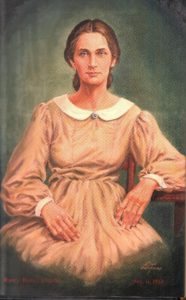 Nancy Hanks Lincoln died October 5, 1818 of “the milk sick.” Or did she? While Abraham Lincoln biographers generally attribute her death to milk sickness, a possibility exists that it might have actually been something else. The story goes like this:
Nancy Hanks Lincoln died October 5, 1818 of “the milk sick.” Or did she? While Abraham Lincoln biographers generally attribute her death to milk sickness, a possibility exists that it might have actually been something else. The story goes like this:


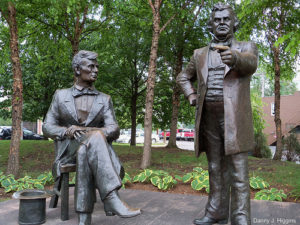 In 1858, Abraham Lincoln began following Douglas from town to town as they campaigned against each other for Douglas’s Senate seat. Challenging the incumbent Senator in a Democratic-dominated state, Lincoln had to coax Douglas to go against his own interests and formally debate. Whenever Douglas gave a major speech, Lincoln told the crowd he would respond that evening or the next day. After doing this for a while, and with the help of his influential friend Jesse Fell, Lincoln approached Douglas about holding a series of joint debates across the state. Reluctant at first, Douglas eventually agreed to one debate in each of the nine congressional districts in Illinois. They had both already spoken in Springfield and Chicago within a day of each other, so they agreed to seven additional joint debates in Ottawa, Freeport, Jonesboro, Charleston, Galesburg, Quincy, and Alton over the next two months. For each debate one candidate would speak for sixty minutes, followed by the other for ninety minutes, and the first would get a thirty-minute reply. They alternated who would speak first, with the incumbent Douglas getting the benefit of doing so in four of the seven debates.
In 1858, Abraham Lincoln began following Douglas from town to town as they campaigned against each other for Douglas’s Senate seat. Challenging the incumbent Senator in a Democratic-dominated state, Lincoln had to coax Douglas to go against his own interests and formally debate. Whenever Douglas gave a major speech, Lincoln told the crowd he would respond that evening or the next day. After doing this for a while, and with the help of his influential friend Jesse Fell, Lincoln approached Douglas about holding a series of joint debates across the state. Reluctant at first, Douglas eventually agreed to one debate in each of the nine congressional districts in Illinois. They had both already spoken in Springfield and Chicago within a day of each other, so they agreed to seven additional joint debates in Ottawa, Freeport, Jonesboro, Charleston, Galesburg, Quincy, and Alton over the next two months. For each debate one candidate would speak for sixty minutes, followed by the other for ninety minutes, and the first would get a thirty-minute reply. They alternated who would speak first, with the incumbent Douglas getting the benefit of doing so in four of the seven debates. Abraham Lincoln is the only president to appoint a tenth justice to the Supreme Court. He made five appointments, one of the most prolific appointers-in-chief in our history. And it all started because of Dred Scott.
Abraham Lincoln is the only president to appoint a tenth justice to the Supreme Court. He made five appointments, one of the most prolific appointers-in-chief in our history. And it all started because of Dred Scott.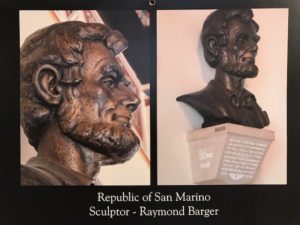 September in the 2020 calendar series by David Wiegers brings us to the tiny city state of San Marino, where Abraham Lincoln not only makes a showing, he’s a citizen.
September in the 2020 calendar series by David Wiegers brings us to the tiny city state of San Marino, where Abraham Lincoln not only makes a showing, he’s a citizen.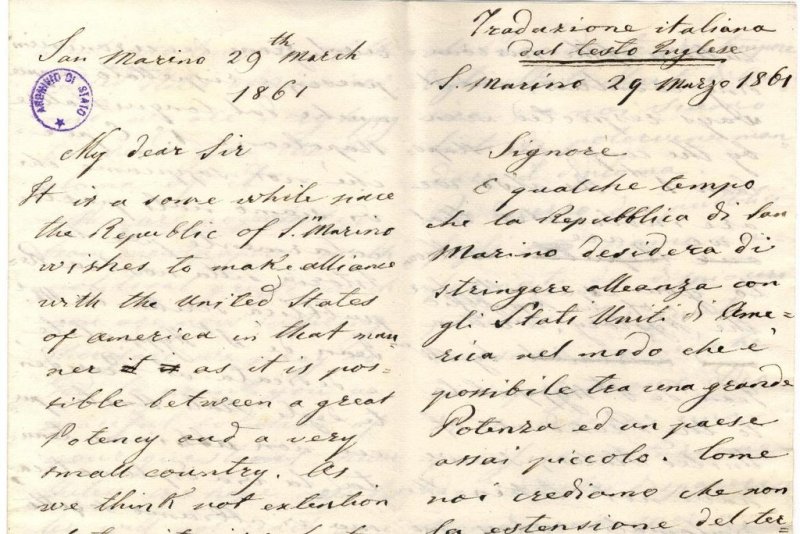
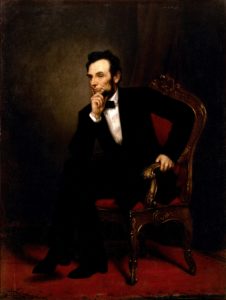 Abraham Lincoln and the Devil? That’s a connection most people wouldn’t easily make, but did you know that Abraham Lincoln had a particular affinity for the fable of Faust?
Abraham Lincoln and the Devil? That’s a connection most people wouldn’t easily make, but did you know that Abraham Lincoln had a particular affinity for the fable of Faust?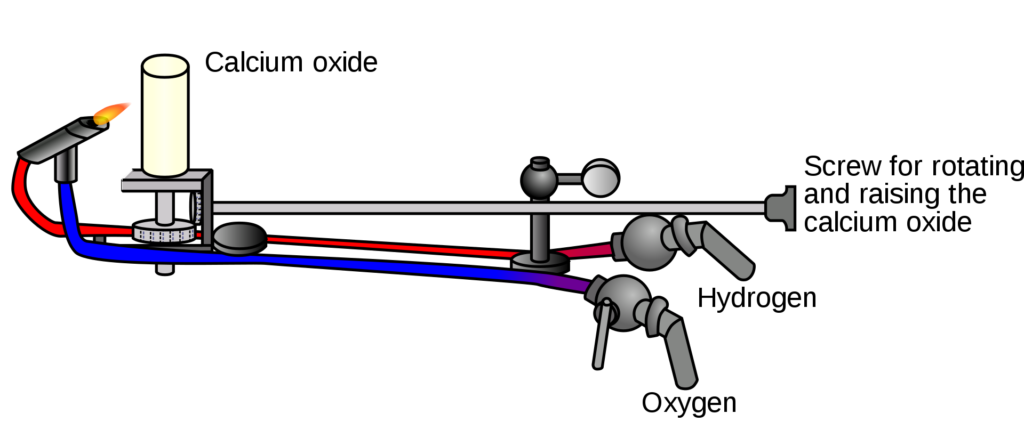

 Lincoln: The Fire of Genius: How Abraham Lincoln’s Commitment to Science and Technology Helped Modernize America was released on September 1, 2022.
Lincoln: The Fire of Genius: How Abraham Lincoln’s Commitment to Science and Technology Helped Modernize America was released on September 1, 2022.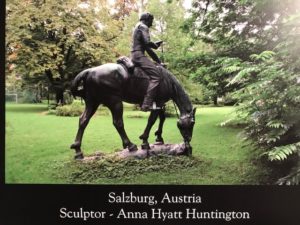 Lincoln is in Salzburg, Austria. I missed it…and yet I didn’t. Each month I explore the statues and locations from the 2020 calendar prepared by David Wiegers. For August we’re in Austria.
Lincoln is in Salzburg, Austria. I missed it…and yet I didn’t. Each month I explore the statues and locations from the 2020 calendar prepared by David Wiegers. For August we’re in Austria.
 Early on the morning of August 12, 1864, poet Walt Whitman watches from his Washington, DC home as President Abraham Lincoln travels from the Old Soldier’s Home to the White House for a day’s work. Whitman would go on to write, not one, but two great poems about our 16th President.
Early on the morning of August 12, 1864, poet Walt Whitman watches from his Washington, DC home as President Abraham Lincoln travels from the Old Soldier’s Home to the White House for a day’s work. Whitman would go on to write, not one, but two great poems about our 16th President.






